
Blue-winged Olives
Baetis
Tiny Baetis mayflies are perhaps the most commonly encountered and imitated by anglers on all American trout streams due to their great abundance, widespread distribution, and trout-friendly emergence habits.
Featured on the forum

With a bit of help from the microscope, this specimen keys clearly and unsurprisingly to Hydropsyche.

Troutnut is a project started in 2003 by salmonid ecologist Jason "Troutnut" Neuswanger to help anglers and
fly tyers unabashedly embrace the entomological side of the sport. Learn more about Troutnut or
support the project for an enhanced experience here.
About "Mystery Creeks": If you recognize one of these, you already understand why I'm keeping it a secret. I'm not as strict as some anglers about hiding where I fish, mostly because I don't expect to substantially affect fishing pressure on already well-known or simply unpopular waters. But there are some gems where I don't want to add a single unfamiliar bootprint to the mix, due to the fishing, their wild character, or keeping a friend's secret. They're all "Mystery Creek" here—even the lakes.
Landscape & scenery photos from Mystery Creek # 295
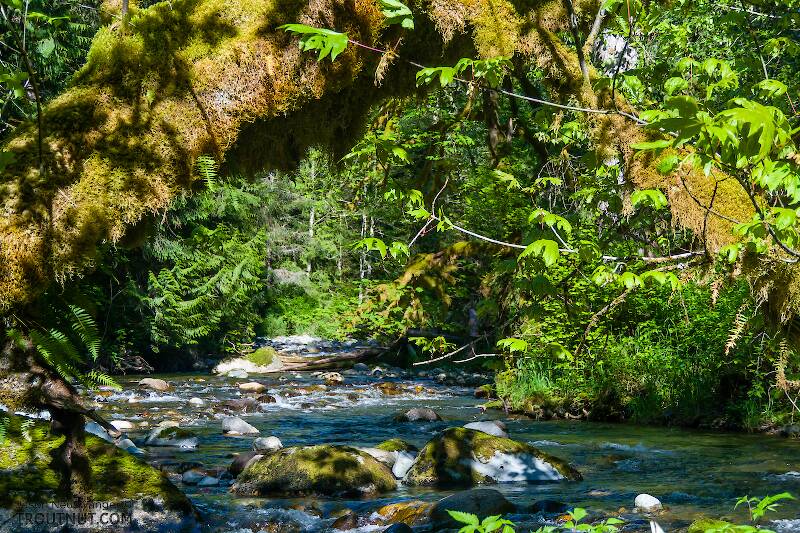
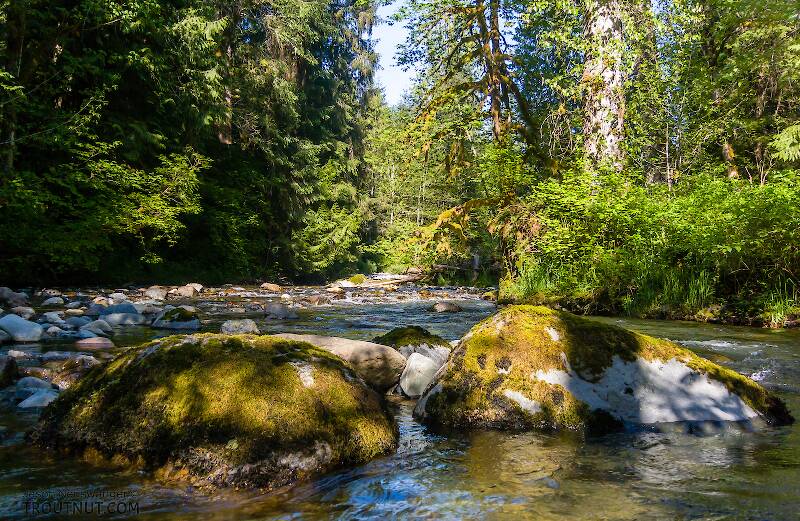
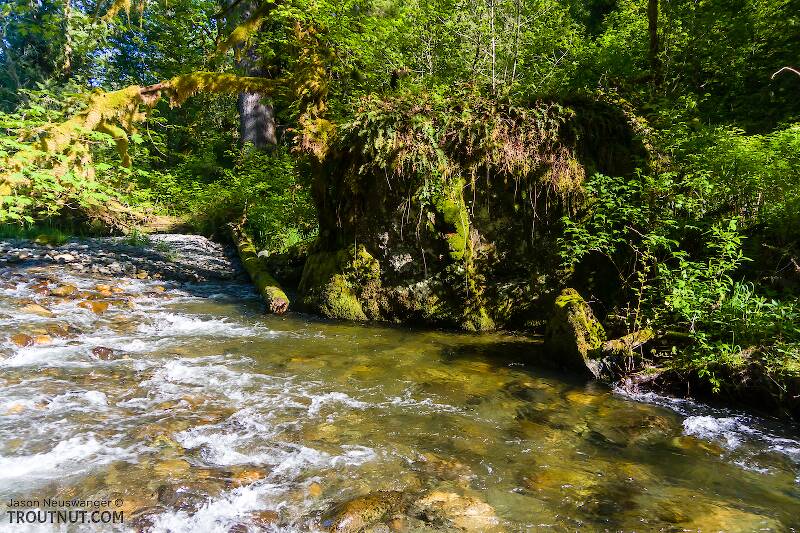
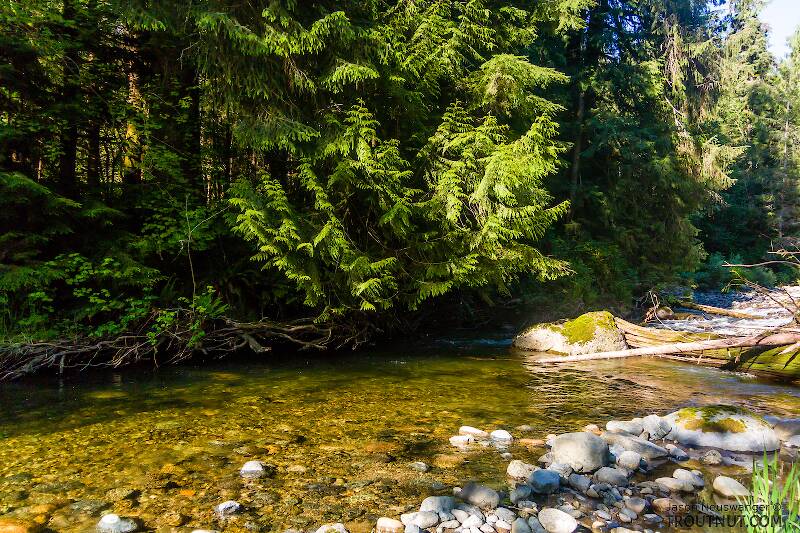
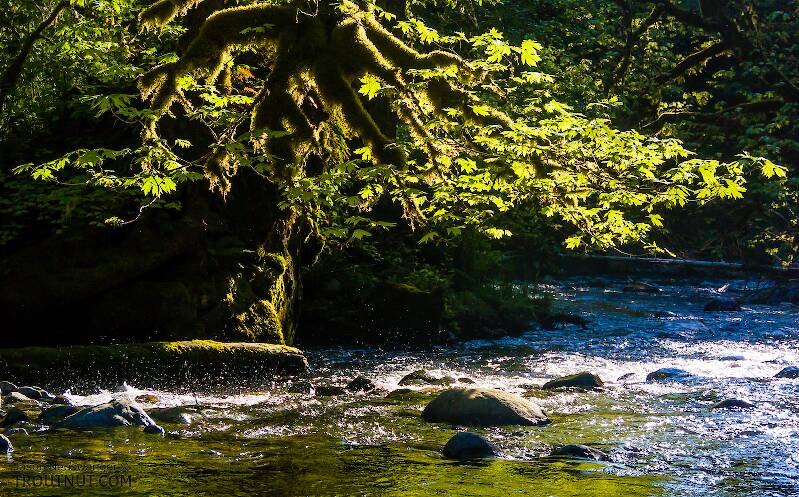
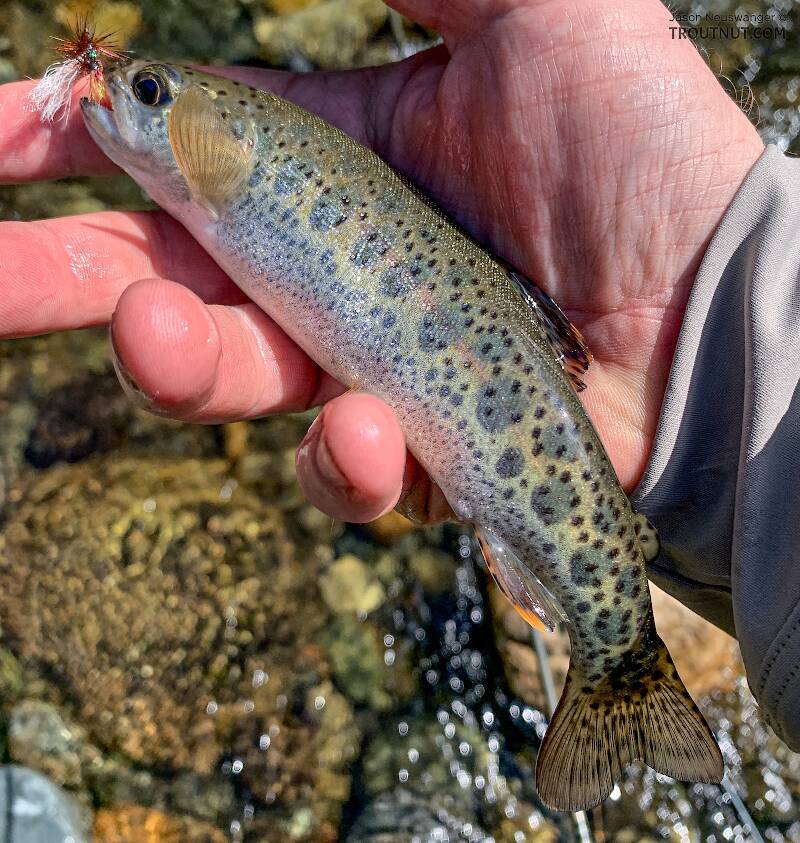
Closeup insects by Troutnut from Mystery Creek #295 in Washington
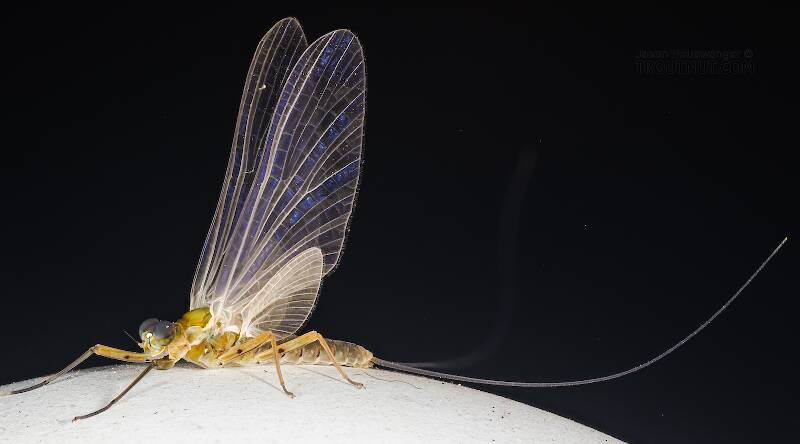
Identification of this one was as follows. Body 9 mm, wing 11 mm.
Both Epeorus albertae and Epeorus dulciana should have a conspicuously darkened humeral crossvein in the forewing. This one doesn't.
The foretarsal claws are dissimilar (one sharp, one blunt), which also rules out the Epeorus albertae group.
The dark macula on the forefemora rules out Epeorus deceptivus, which is also supposed to be a little bit smaller.
Both Epeorus grandis and Epeorus permagnus should be much, much larger.
Of the species known to be present in Washington, this leaves only Epeorus longimanus, which is exactly the right size. The key to male spinners in Traver (1935) describes distinctive markings that are visible (although more faintly) in this dun: “Black posterior margins of tergites do not extend laterally to pleural fold, but an oblique black line form this margin cuts across poster-lateral triangle to pleural fold.”
Both Epeorus albertae and Epeorus dulciana should have a conspicuously darkened humeral crossvein in the forewing. This one doesn't.
The foretarsal claws are dissimilar (one sharp, one blunt), which also rules out the Epeorus albertae group.
The dark macula on the forefemora rules out Epeorus deceptivus, which is also supposed to be a little bit smaller.
Both Epeorus grandis and Epeorus permagnus should be much, much larger.
Of the species known to be present in Washington, this leaves only Epeorus longimanus, which is exactly the right size. The key to male spinners in Traver (1935) describes distinctive markings that are visible (although more faintly) in this dun: “Black posterior margins of tergites do not extend laterally to pleural fold, but an oblique black line form this margin cuts across poster-lateral triangle to pleural fold.”
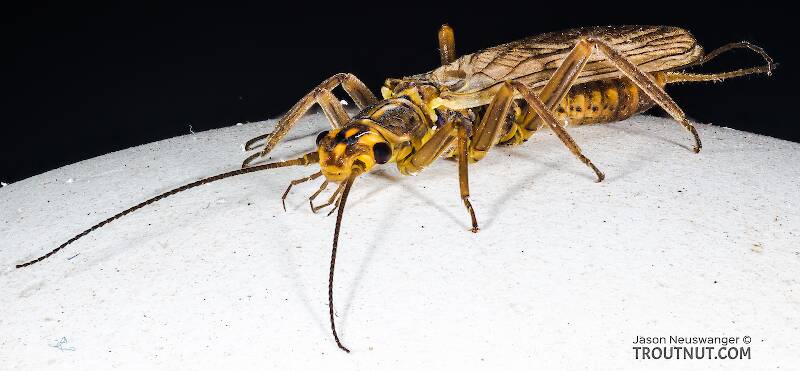
Family-level ID following Merritt, Cummins, & Berg 5th Edition:
1. Thoracic gill remnants absent
2. Arms of mesosternal Y-ridge approach posterior end of furcal pits
3. Submental gill remnants short, obscure, or absent
4. Male. Note that sternum 9 (the long, dark, last segment) appears to be the 8th if you count from the front in the ventral view, because the first segment is not easily visible ventrally.
5. Male abdominal tergum 10 not divided posteriorly; Paraprocts modified as hooks.
6. Male abdominal tergum 10 simple without notches or other prominent processes. This one was tricky, because at first glance it looks like the hooks arise from tergum 10, but in fact they're coming from the paraprocts underneath. There's a medial groove on tergum 10 that could be seen as a "notch" too, but it seems by "notch" the key is referring to a notch in the margin.
7. Abdominal sternum 8 with a conspicuous lobe and sternum 7 without such a lobe.
This leads to Isoperla.
Among Isoperla species known in Washington, most species are ruled out by different shapes of the vesicle (the rounded posterior bump on sternum 8). Isoperla pinta is ruled out by the lack of a region of stout spinules on tergum 9. The remaining options (without knowing how to properly dissect and image the aedeagus) are Isoperla fulva, Isoperla marmorata, Isoperla tilasqua, and Isoperla gravitans, the latter of which is too large. The other three are all at least slim possibilities, but several described characteristics seem to best match Isoperla fulva, which is also mentioned as the most common western Isoperla.
1. Thoracic gill remnants absent
2. Arms of mesosternal Y-ridge approach posterior end of furcal pits
3. Submental gill remnants short, obscure, or absent
4. Male. Note that sternum 9 (the long, dark, last segment) appears to be the 8th if you count from the front in the ventral view, because the first segment is not easily visible ventrally.
5. Male abdominal tergum 10 not divided posteriorly; Paraprocts modified as hooks.
6. Male abdominal tergum 10 simple without notches or other prominent processes. This one was tricky, because at first glance it looks like the hooks arise from tergum 10, but in fact they're coming from the paraprocts underneath. There's a medial groove on tergum 10 that could be seen as a "notch" too, but it seems by "notch" the key is referring to a notch in the margin.
7. Abdominal sternum 8 with a conspicuous lobe and sternum 7 without such a lobe.
This leads to Isoperla.
Among Isoperla species known in Washington, most species are ruled out by different shapes of the vesicle (the rounded posterior bump on sternum 8). Isoperla pinta is ruled out by the lack of a region of stout spinules on tergum 9. The remaining options (without knowing how to properly dissect and image the aedeagus) are Isoperla fulva, Isoperla marmorata, Isoperla tilasqua, and Isoperla gravitans, the latter of which is too large. The other three are all at least slim possibilities, but several described characteristics seem to best match Isoperla fulva, which is also mentioned as the most common western Isoperla.

